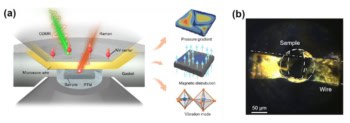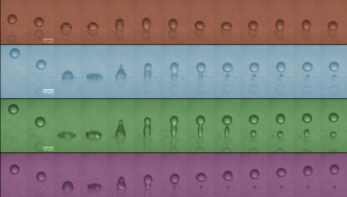Physicists in Austria have found strong evidence for superfluidity in an ultracold gas of fermionic atoms. Rudi Grimm and co-workers at the University of Innsbruck have observed the "pairing gap" in an ultracold Fermi gas for the first time. The observation of a similar gap in low-temperature superconductors in the late 1950s was a major milestone in the quest to understand these materials. The new results, which agree with theoretical calculations by a second group in Finland, could help us understand more about high-temperature superconductivity and systems as diverse and exotic as neutron stars, atomic nuclei and quark-gluon plasmas.

All atoms are either bosons or fermions depending on the value of their spin, and the difference between the two becomes clear when they are cooled to almost absolute zero. Bosonic atoms have integer spin and can collapse into the same quantum ground state to form a Bose-Einstein condensate: this condensation process is at the heart of superconductivity — the flow of electric current without resistance.
Fermionic atoms, on the other hand, have half-integer spin and obey the Pauli exclusion principle. This means that two fermionic atoms cannot occupy the same quantum state. However, if two fermionic atoms are bound together, the resulting molecule will be a boson — because it will have an integer spin — and will therefore be able to undergo condensation.
Since electrons are fermions they must form Cooper pairs — named after Leon Cooper of the Bardeen-Cooper-Schrieffer (BCS) theory of superconductivity — before they can undergo Bose-Einstein condensation (BEC). If this Cooper-pairing process could be reproduced in a gas of fermionic atoms, it should be possible to learn more about one of the biggest mysteries in modern physics — the nature of the pairing mechanism in high-temperature superconductivity.
Grimm and co-workers started with a gas of fermionic lithium-6 atoms that had been cooled to about 500 nanokelvin, and then applied a carefully tuned magnetic field that caused the fermionic atoms to pair up and form bosonic molecules. These molecules subsequently condensed to form a molecular BEC.
Next, the Innsbruck team changed the magnetic field, which controls the coupling strength between the atoms, to convert the BEC into a strongly interacting Fermi gas. Finally they applied a radio-frequency (RF) wave to break up the pairs.
By observing which RF wavelengths were absorbed by the system, Grimm and co-workers were able to calculate the binding energy of the pairs — which shows up as a “pairing gap” in the spectra — and show how it changed with temperature (C Chin et al. 2004 Sciencexpress 1100818). New theoretical work by Paivi Törmä and co-workers at the University of Jyväskylä confirms that the results are consistent with the formation of Cooper pairs and the onset of superfluidity in the gas (J Kinnunen et al. 2004 Sciencexpress 1100782).
“For the first time, we can check theoretical models on strongly interacting Fermi systems — the so-called BEC-BCS crossover phase,” Grimm told PhysicsWeb. “If we are lucky, the research could show us a way to make superconductors at room temperature”.




